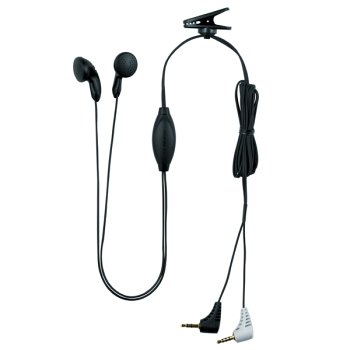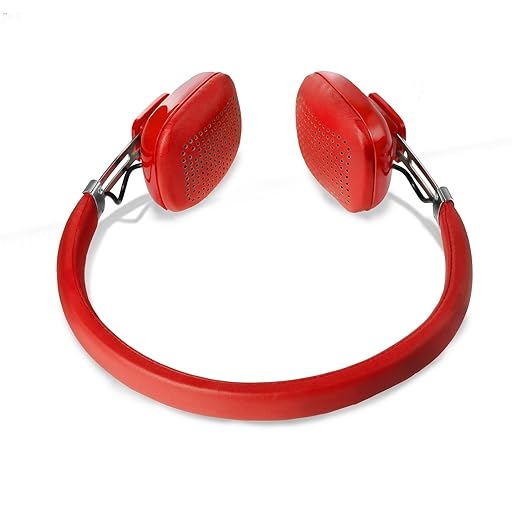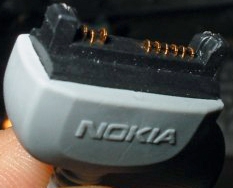A Brief History of Killing the Headphone Jack
Is it the end-of-days for the humble headphone jack? As Apple prepare to remove it from their next iPhone - with Android manufacturers no-doubt following suit - I thought now would be a good time to look at the previous occasions when smartphone makers have tried to kill the headphone jack.
This is a non-exhaustive history, mostly drawing from my industry experience and drawers full of old phones!
Firstly (although not chronologically) special mention must go to… The original iPhone!

 Yup, in Infinite Loop's infinite wisdom, the very first iPhone had a recessed headphone socket which made it incompatible with virtually every headphone on the market. I'm sure there were incredibly compelling technical reasons for this decision, and was in no way influenced by Apple's fanatical desire to sell as many overpriced accessories as possible…
Yup, in Infinite Loop's infinite wisdom, the very first iPhone had a recessed headphone socket which made it incompatible with virtually every headphone on the market. I'm sure there were incredibly compelling technical reasons for this decision, and was in no way influenced by Apple's fanatical desire to sell as many overpriced accessories as possible…
Nokia's POP port
For the longest time, Nokia smart phones used the POP port.
It was a mix of USB data, power, and audio - depending on which phone and cable you had.
Around the time of the N95, Nokia moved to allowing regular headphone jacks and standard USB sockets for data transfer. Power was still (mostly) via their proprietary barrel connector.
Oh, and a special mention to the Nokia N-Gage which had this abomination as its headphone cable.

Sony Ericsson's Connector
Ah, the FastPort. Unloved by all who used it. Fragile and expensive.
The connector was stackable - meaning you could charge the phone while using the headphone port.
 Wonder if the new iPhone will look that cool?
Wonder if the new iPhone will look that cool?
Oh, there was also a subtly different variant which I think was incompatible.
BlackBerry's 2.5mm headset
Along with many other manufacturers, RIM's Blackberry used a 2.5mm headphone jack. That was pretty much their standard since the original phone-based Blackberry.
I'm trying to figure out when they switched to the 3.5mm jack. 2007's 8800 still had the 2.5mm jack as did 2009's 8350i
Curiously, 2008's Blackberry Storm had a 3.5mm headphone jack. I worked on the product when I was at Vodafone. I remember the switch of the headphone port causing lots of arguments about whether businesses would be prepared to buy new accessories and car kits. Although, by that time, the world was firmly in the grip of Bluetooth everywhere.
Samsung's many connectors.
As late as 2009, Samsung was pushing its 20-pin connector.
 This, of course, is not to be confused with Samsung's 18-pin connector.
This, of course, is not to be confused with Samsung's 18-pin connector.
Nor should you mistake it for their 10-pin connector.
Nor any of their bewildering array of other connectors.
HTC's Android extUSB
The very first Android phones - the HTC Dream and the HTC Magic - originally had no headphone socket!
There was a USB socket on the bottom into which an adapter could be fitted.
Crazily enough, the phone has a proprietary headphone jack, proving once and for all that HTC doesn't like you Endgadget 2009-02-17
The port was called extUSB and was backwards compatible with the then-standard micro-USB port.
This followed the same pattern as HTC's previous Windows Mobile devices. Routing everything through a single port makes a certain kind of sense. Fewer components, more space on the board, less chance of water getting in.
But you run into the problem of needing passthrough cables (as above) or relying on proprietary connectors.
…and so it goes…
Losing the headphone port on a phone isn't the end of the world. Yes, it's another gadget to charge - but fewer wires to break. Audio quality is unaffected. Battery life of your phone may take a small hit, but not too drastically.
Bluetooth headphones are cheap - with basic ones being just over a fiver
 Of course, you can spend stupid money on branded ones. £200 to you, buddy.
Of course, you can spend stupid money on branded ones. £200 to you, buddy.

Or, for under a tenner, you can buy a Bluetooth adapter which will work with your existing headphones. See my 2010 review of the Jabra Clipper.
This is all a long-winded process to remove every port from the phone.
- Bluetooth for audio.
- WiFi for data.
- Bluetooth for peripherals.
- Qi for wireless charging.
Can it be done? Easily. Will customers buy it? Ah, that remains to be seen. Personally, I'm looking forward to doing away with a tangled mess of incompatible cables,
If I've missed out your favourite proprietary smartphone audio connector - please do let me know in the comments.


3 thoughts on “A Brief History of Killing the Headphone Jack”
Trackbacks and Pingbacks
What links here from around this blog?